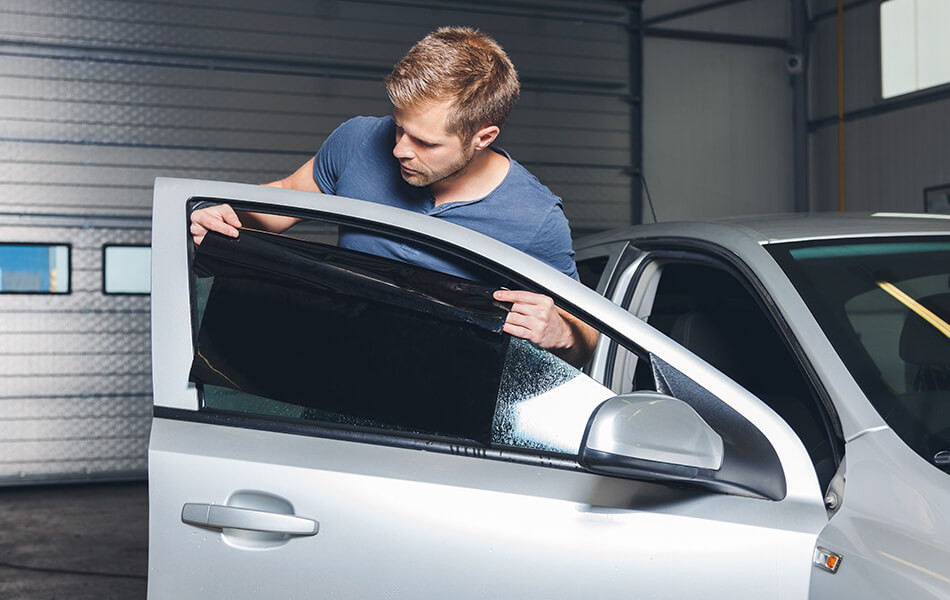Moro Auto Spa Window Tinting for Durable UV Protection and Comfort
Moro Auto Spa Window Tinting for Durable UV Protection and Comfort
Blog Article
Your Comprehensive Overview to DIY Window Tinting: Advice
Carrying out a Do it yourself home window tinting project presents an opportunity to improve both the functionality and appearances of your space. Before beginning on this venture, it is critical to browse the intricacies of neighborhood tinting regulations and select a proper movie that aligns with your objectives.
Recognizing Home Window Tinting Regulations
Navigating the elaborate landscape of home window tinting legislations is essential for any type of do it yourself fanatic seeking to boost their car's aesthetic appeals and convenience. Each state in the U.S. has particular guidelines regarding the permitted levels of color on different windows, which can dramatically affect your decision-making procedure.
Commonly, these legislations determine the optimum allowable Visible Light Transmission (VLT) percentage, which refers to the amount of light that can travel through the tinted windows. For circumstances, some states allow just a particular percentage of tint on the front windscreen, while allowing darker shades on rear windows. Compliance with these regulations is important, as failure to adhere can cause fines or the requirement to get rid of the tint altogether.
Additionally, there are commonly distinctions between passenger cars and commercial lorries, with different rules relating to each group. It's a good idea to consult your regional Division of Motor Vehicles or comparable authority to collect specific info customized to your place. Recognizing these laws not only makes certain lawful conformity yet additionally enhances safety by maintaining presence and preventing possible threats while driving.
Choosing the Right Color Film
Selecting the proper color movie is an important action in the do it yourself window tinting process, as it directly affects both the appearance and functionality of your automobile's windows. Numerous variables need to lead your choice, including the sort of film, its legal conformity, and your preferred results.
First, consider the various types of color movies available: colored, metalized, ceramic, and hybrid. Dyed films supply a standard level of personal privacy and warmth decrease however may fade with time. Metalized films use enhanced warm denial and toughness but can interfere with electronic signals. Ceramic films, while a lot more costly, give remarkable warm resistance and UV protection without signal disturbance.
Next, make sure that the movie complies with neighborhood laws concerning visible light transmission (VLT) percents. Conformity with these regulations is important to stay clear of penalties and guarantee safety.
Crucial Tools for DIY Tinting
Having picked the right color movie for your windows, the following step involves gathering the essential tools to guarantee a successful installment. The main devices you will certainly require consist of an energy knife or a razor blade, which is essential for cutting the tint movie to the wanted size. A squeegee is also essential, as it aids eliminate air bubbles and smooth out the movie during application.

Moreover, consider using a warm gun or next page hairdryer, as this can help mold and mildew the color movie to the contours of the window and help with adherence. Handwear covers are a good idea to stay clear of finger prints on the movie throughout setup. By gathering these vital tools, you will certainly be well-prepared to tackle your More Info DIY home window tinting job effectively.
Step-by-Step Application Process
Begin by thoroughly cleaning the home window surface area to make sure optimum adhesion of the tint movie. Use a glass cleaner and a lint-free fabric to get rid of any dust, dust, or grease. Once the home window is tidy, gauge the tint movie versus the home window, allowing for a mild overlap on all sides. Cut the movie appropriately with a sharp utility blade for an accurate fit.
Next, prepare a service of water and a few drops of baby hair shampoo in a spray bottle. Gently spray the window surface area and the adhesive side of the movie. This remedy will permit repositioning throughout application. Carefully straighten the film with the top of the home window, ensuring it is straight. Press the movie versus the glass, beginning with the facility and functioning external to eliminate air bubbles. Utilize a squeegee to smooth the movie, applying company, even pressure.
Trim any kind of excess movie from the edges with your energy knife. Ultimately, allow the tint to cure for at the very least 24 hr without rolling down the windows. This action is crucial for making certain a resilient application. Adhere to these steps faithfully for optimal lead to your DIY window tinting task.
Upkeep and Care Tips

It's a good idea to wait a click for info minimum of a week after installment prior to cleansing your windows to allow the glue to completely cure. Throughout this initial duration, prevent rolling down the windows to avoid any damages to the color.
Regular maintenance involves examining the edges of the tint for any kind of signs of gurgling or lifting. If you discover any issues, it's finest to address them without delay to stay clear of additional deterioration. Additionally, beware with the use of home window treatments, such as shades or drapes, as they can generate heat that could endanger the color with time.
Conclusion
Finally, embarking on a DIY home window tinting project demands cautious consideration of neighborhood laws, choice of proper tint films, and the use of important tools. An organized application process ensures ideal outcomes, while normal maintenance adds to the long life of the tint - Moro Auto Spa Window Tinting. By sticking to these standards, individuals can achieve both visual improvement and enhanced personal privacy in their rooms, making do it yourself home window tinting a useful undertaking
Report this page